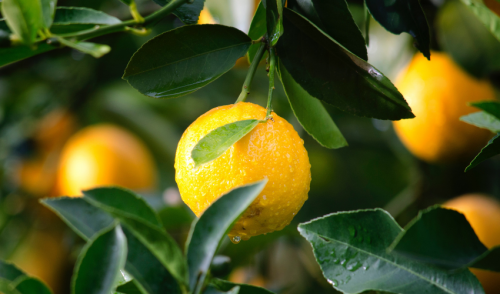You can enjoy a touch of summery citrus when you bring lemon, lime, orange, or other citrus trees indoors in winter. Providing the proper indoor citrus care is essential to ensure these plants thrive, however, and with good care you will have a delicious fruit crop to brighten any winter day.
Growing Citrus Indoors
It is easier than many people realize to grow citrus trees indoors. Citrus stock is often grafted onto dwarf roots, ensuring the trees never reach more than 3-5 feet tall, perfect for any ceiling height. These trees can thrive in pots, so long as the pots are deep enough to balance their heavy crowns, and they make stunning statement plants for any room. A citrus tree does need proper care, however, to reach its full potential indoors.
- Drainage: These plants enjoy well-watered soil, but do not like damp feet. It is imperative that citrus potting soil be well-draining, and adding an inch or two of gravel in the bottom of the pot will help provide good drainage as well as stabilize the pot as the plant grows larger.
- Sunlight: Citrus trees require a minimum of 5-6 hours of direct sunlight each day to grow well, and 8-12 hours is even better. Position citrus trees in rooms with abundant natural light, such as sunrooms, or at least near a south- or west-facing window to maximize sunlight.
- Humidity: While these plants don’t like wet roots, they do like high humidity. Using a pebble tray or misting the plant regularly can help keep humidity levels higher. A humidifier used nearby is an even better solution to ensure there is suitable humidity.
- Pruning: Lightly pruning indoor citrus plants can help them keep their shape, and removing tangled branches will allow better air circulation around the foliage to lower the risk of pest infestations and problems.
- Acclimation: If you keep your potted citrus outdoors during the summer, you must slowly acclimate the plant to indoor conditions before winter. Move the plant for just an hour or two at first, gradually increasing the length of time it stays inside, to minimize relocation stress.
Winter Indoor Citrus Care
Whether you are bringing a potted citrus tree indoors just for the winter or you will keep it indoors year-round, its care does need adjusting during the winter months to ensure the best growth and richest harvests. To keep your citrus tree thriving during the coldest part of the year…
- Lower the room temperature. These trees go semi-dormant in winter and do best with a room temperature of 58-68 degrees. If you don’t have a cooler room, at least be sure the tree is not near any heating vents, ducts, or other heat sources, and cool off the room occasionally to keep the tree happy and healthy.
- Consider supplemental lighting. Even though natural light is less during the winter months, citrus trees still require abundant sunlight to stay healthy. Keep your tree near the brightest window, and consider adding supplemental grow lights to give it an extra boost of solar energy.
- Rotate the plant regularly. To keep the tree straight and true, rotate it regularly so all sides are equally exposed to the light. This is especially critical if you do not use supplemental light, or else the branches and foliage may begin to bend toward the window, disrupting the tree’s shape.
- Fertilize monthly. Even in their semi-dormant state, these trees are heavy feeders and require balanced nutrition. Offer a citrus formula liquid fertilizer diluted to half strength once a month through the winter to keep your tree fed but without overwhelming it with too many nutrients.
- Improve air circulation. Citrus trees are accustomed to outdoor breezes, not the still air of indoor spaces. Turning a ceiling fan on a slow, low speed or having a small fan running in the room occasionally can help circulate air to keep these trees happy and minimize pest infestations.
- Water properly. These trees require less watering in winter, and should be watered no more than 1-2 times per week during the winter months. Only water when the top inch or two of soil is dry, and do not let water accumulate in the plant’s saucer or the roots may rot.
- Watch for pests. Citrus trees are susceptible to a range of pests, including aphids, mealybugs, spider mites, and scale bugs. Watch for these pests carefully, and hand-pick them or use insecticidal soap as needed to remove infestations.
Even with the best care, it is important to be patient with your citrus trees in the winter. While the fruit may ripen, it can take several months to become fully ripe. Once ripened, the fruit can be left on the tree for several weeks without difficulty, letting you enjoy a fresh burst of summery flavor even when the season is about as far from summer as it can






Comments